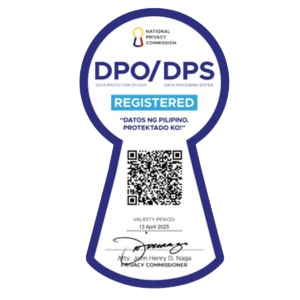Metro Roxas Water District (MRWD) continuously improve and maintain its transmission lines, distribution networks, reservoirs and treatment plant. The newly constructed 30, 000 cu.m. per day capacity Water Treatment Plant in Paslang, Brgy. Salocon, Panitan, Capiz is included in the Metro Roxas Water Supply System and improvement and Expansion Project (MRWSSIEP) and constructed under Design and Built Scheme. It is funded by the Japan Bank for International Cooperation (JBIC) thru the Provincial Cities Water Supply Project V of the Local Water Utilities Administration (LWUA).
The Water Treatment Plant. The Metro Roxas Water District Water Treatment Plant is designed to treat raw water from Panay River with a Turbidity of 300 NTU and produce 30, 000 m3 per day of potable water that had met and surpassed the Philippine National Standards for Drinking Water.
The State of the Art Control Room. Three (3) parameters to consider before backwashing; Filter Runtime, Loss of Head and Turbidity. The 2 Magelis Terminals located at the 2 Filter Consoles monitores the Runtime of each Filter from the time it was last backwashed, the same data is transmitted to the OIT. Installed to each Filter Basin are the Strainer and the Mudleg Assembly attached to a Differential Pressure Sensor at the Filter Gallery that determines the Loss of Head and the signal is transmitted to its corresponding Loss of Head Meter at the Filter Consoles and to the OIT. Two (2) Turbidity Meters are installed at the Filter Effluent pipes of Filters 1 & 2 and at the Filter Effluent of Filters 3 & 4 both transmit the data to its coresponding Turbidity Meter at the Filter Consoles and to the OIT. The new water treatment plant has a quality control laboratory with state of the art technology equipment that can analyze the physical, chemical and bacteriological qualities of the water.
Monitoring of raw and finished water is performed on an hourly basis. While sanitary survey is performed daily at the farthest point of the distribution line to monitor the residual chlorine and maintained at 0.2 mg/li.
The Intake Structure (IS). The system starts in the IS where raw water from Panay River enters through a coarse bar screen to prevent large debris and through a fine screen to further prevent entrance of smaller solids before it is pumped by 2-duty & 1-standby, 3-75 HP Submersible Pumps,to the Sand and Grit Removal Chamber through a 250 mm steel pipe. Each submersible pump is equipped with Moisture Detection and Thermal Protection Circuits. A float switch is also installed to shut it off in case of emergency,each Submersible Pump is provided with Emergency Push-Button Switch installed above the concrete slab directly over it.
Three (3) Digital Level Transmitters (DLT) are installed at the IS to monitor the water level at the River, at the Screen Differential and inside the IPH. At a certain low raw water level and when the control is set to Programmable Logic Circuit (PLC) mode, any running 75 HP Submersible Pump will be shut off automatically. The River and Screen Differential DLT server as monitors for the Operator Interface Terminal (OIT).
The Sand and Grit Removal Chamber (SGRC). The SGRC acts as filter for the sand and slit reduces raw water Turbidity by 10 to 20 percent. The Digital Conductivity Analyzer along with its Electrodeless Conductivity Sensor are installed at the SGRC to monitor the saline content of raw water and when the conductivity measures 2, 000 Micro Siemens/cm or more (too salty for human consumption) and when the control is set to PLC mode, any running Intake Submersible Pump will be automatically shut-off. A Digital Turbidity Analyzer is also installed at SGRC to monitor raw water turbidity and the data is transmitted to the OIT and Circular Chart Turbidity Recorder (CCTR). The WTP was designed to handle 300 NTU of raw water turbidity. However, it is able to treat raw water with more than 10 times its rated capacity and still able to reduce it to less than 1 NTU after clarified water possess through the filtration system.
The Flash Mixing Chamber (FMC). The raw water from the SGRC flows by gravity through a 600 mm steel pipe to the FMC equipped with 25 Hp Rapid Mixer to ensure vigorous homogeneous mixing of the raw water with the chemical reagents. Attached to the 600 mm steel pipe are the upstream and downstream sensors of Plant Influent Digital Flow Meter to monitor the Rate of Flow of raw water and the data is transmitted to the OIT. Pre-chlorination is applied at the FMC to disinfect the the raw water. Liquified Aluminum Sulfate is also introduced at the FMC to allow flocs to coagulate and depending on raw water quality; polymer and soda ash is added to correct the pH value. The float switch is installed to shut off the 25 Hp Rapid Mixer when raw water at FMC is at certain low level.
The Flocculation Tanks (FTs). The chemically treated raw water passes through the first two parallel FTs were slow mixing occurs for further coagulation, it is then allowed to overflow to the second two parallel FTs mixed at the slower pace to allow flocs to agglomerate and to start settling down. The flocculated water is allowed to flow underneath the second concrete wall to the two parallel Sedimation Basins.
The Sedimation Basins (SBs). Tube Settlers are installed to increase the settling capacity of the SBs by reducing the vertical distance a floc particle must settle before agglomerating to form longer particles and by capturing the fine flocs that escaped the clarification zone beneath.
Clarification Tract (Clari-trac) Systems are installed to collect settled sludge at the bottom of the two parallel SBs by means of suction and discharges them by gravity through flexible sludge removal piping system. During high turbidity period, when concentration of sludge is more than what the Clari-tracs can collect, manual cleaning of SBs are implemented once in evry 2 to 3 weeks.
Clarifier Overflow Channel. Clarified water leaves the SBs through a submerged 8-300 mm black perforated PVC pipes installed above the tube settlers and allowed to flow to the Clarifier Overflow Channel where the water level is monitored by a Level Transmitter that transmits the signal to the OIT.
The Filtration Basins. Clarified water from the clarifier overflow channel is evenly distributed to the 4 gravity dual media filters at the Filtration Basins through a 4-350 mm steel pipe where the remaining colloidal particles are being filtered at the filtration chambers, which utilized 2 layers of filter media, the Anthracite over the Silica Sand. The HDPE Type-S Underdrains with Filter Caps on top are installed underneath the filter media to serve as a means of collecting the filter media to serve as a means of collecting the filtered water, provide a means of backwashing the filter media and act as a barrier so that the filter media will not pass through the next stage.
The Sludge Lagoon. The backwash wastewater flow by gravity into the sludge pit and as the water reaches the set water level, the 2-30 Hp Submersible Sludge Pumps automatically run and empty the sludge pit y transferring its content to the sludge lagoon.
Backwahing can be performed in three (3) ways: Automatic , Semi-automatic , and Manual. In Automatic mode, anyone of the three (3) above-mentioned parameters based on predetermined set-points can start the Filter Backwash Process without human intervention. In Semi-automatic mode, only the Start Backwash Process Switch needs to be pressed and the Backwash sequence shall commence. While in the In Manual mode, the WTP Operator takes the control and handles the Filter Backwash Sequence.
The Treated Water Reservoir and Pump House. Post-chlorination is applied at the clear well for final disinfection of the filtered water and a pH correction chemical is added when required. The filtered and treated water is stored n a Treated Water Reservoir (TWR) and Pump House. To monitor water quality, the Turbidity Analyzer, pH Analyzer, Chlorine Residual Analyzer are installed at the TWR and a a Water Level Transmitter is also installed to monitr quantity of water at the TWR, all data are transmitted to the OIT. Potable water is supplied to service areas in Panitan through 1-duty & 1-standby, 2-50 Hp Variable Frequency Drive (VFD) Vertical Turbine Pumps and to Arcabalo/ Lawaan reservoirs, more or less elevation 60 meters, through 2-duty & 1-standby, 3-250 Hp Vertical Turbine Pumps utilizing a 600 mm Transmission Pipeline. 2-duty & 1-standby, 3-30 Hp Vertical Turbine Backwash Pumps transmit water during filtering media backwashing.
The Surge Vessel. The 8, 000 liters Surge Vessel protects the Arcabalo/ Lawaan 600 mm Transmission Pipeline from water hammer caused by back pressure during power failure.
The Power Generating Set. The 1, 500 Kilo Watts (kw) Power Generating Set (PGS) is readily available in case of power failure. During power outages the Automatic Transfer Switch (ATS) automatically starts and transfers power to he 1, 500 kw PGS to resume power supply. All pumps and equipments running under PLC mode will automatically start upon resumption of power while the other pumps and equipments need manual starting. Sensitive electronic equipments are provided with an Uninterrupted Power Supply (UPS) to continuously supply power during power outages.
Other projects under this package are:
* The construction of (2) reservoirs at Arcabalo,Roxas City and Sta.Cruz, Ivisan with a combined capacity of 1,000 cu.m.
* The construcion of the new 108 km. distribution lines, and
* The construction of 9 km. 600 mm transmission line from Paslang to Roxas City.
With the completion of the aforementioned expansion projects MRWD is now capable of serving as much as 35,000 service connections.



